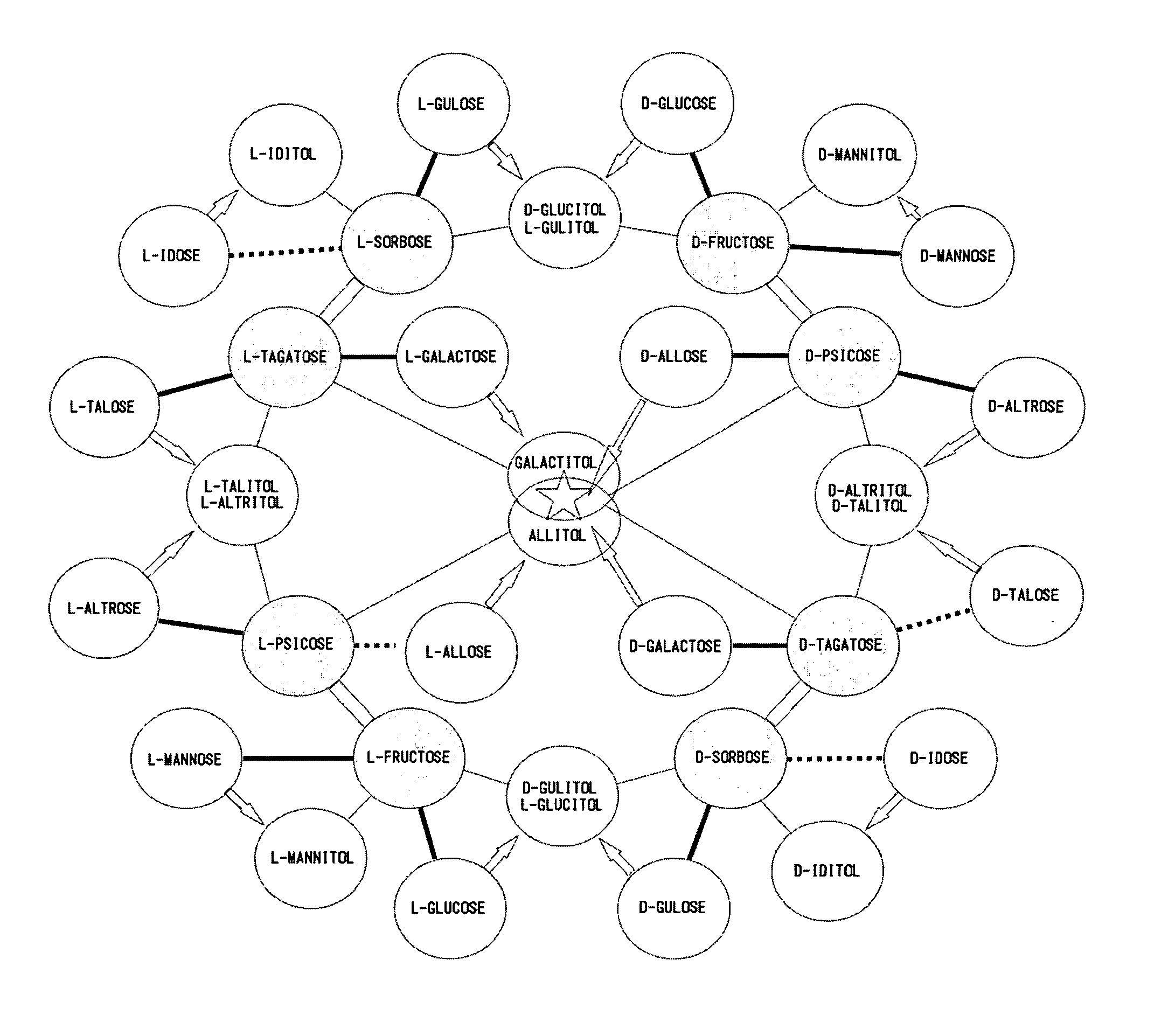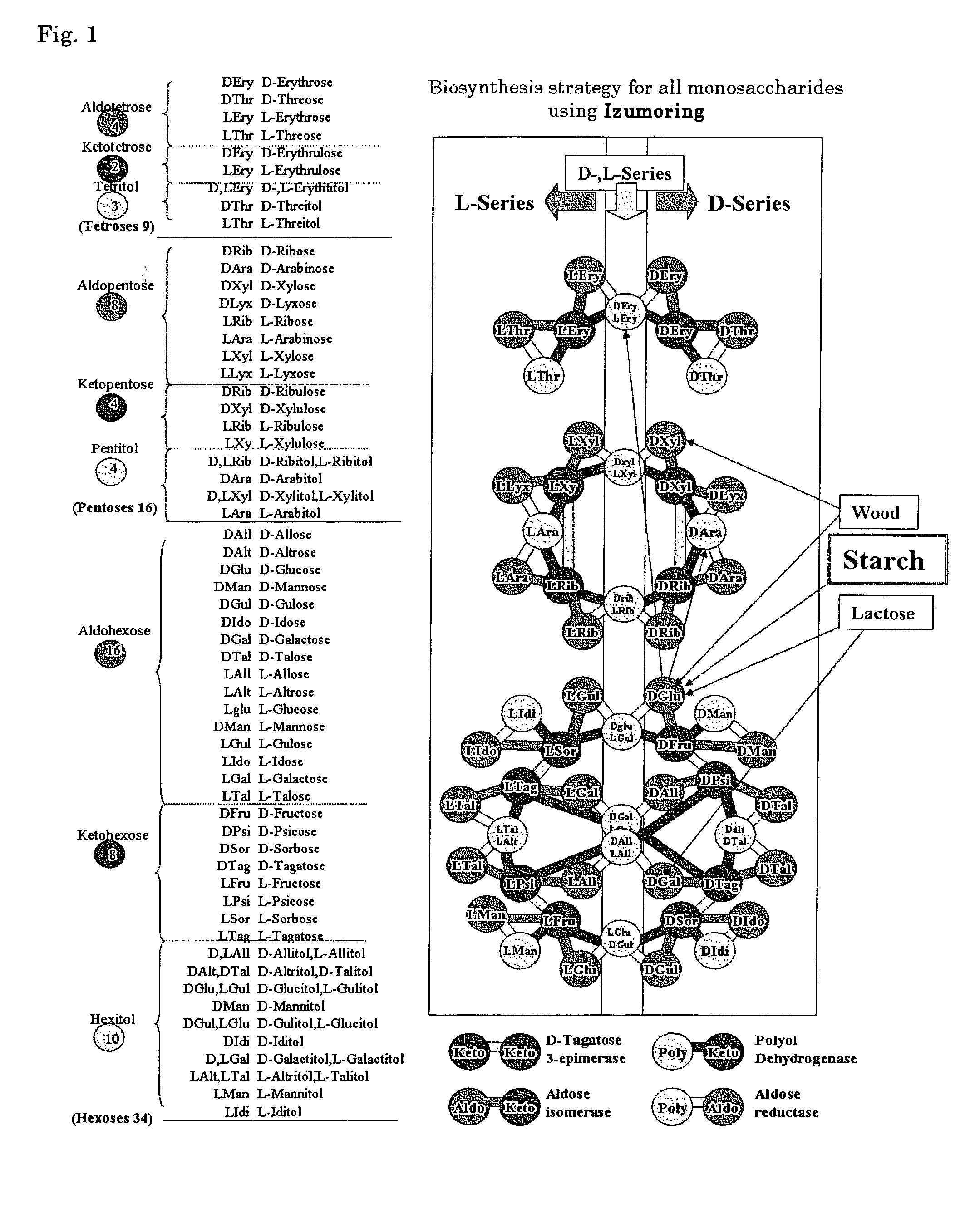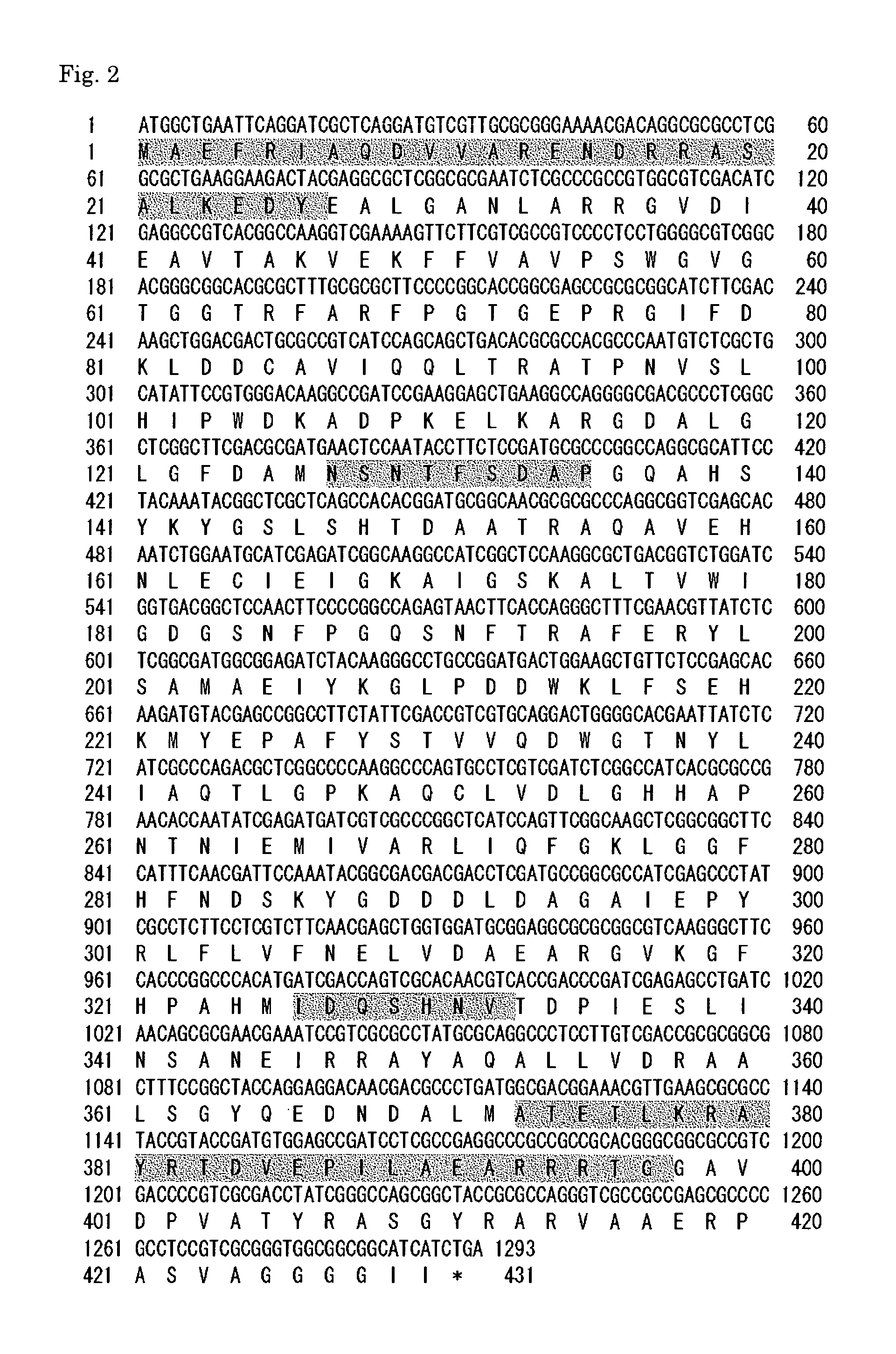Gene sequence of l-rhamnose isomerase having new catalytic function and use thereof
a technology of lrhamnose isomerase and gene sequence, which is applied in the field of gene sequence of lrhamnose isomerase having new catalytic function and use thereof, can solve the problems of unreasonable practical use and relatively easy acquisition of d-psicos
- Summary
- Abstract
- Description
- Claims
- Application Information
AI Technical Summary
Benefits of technology
Problems solved by technology
Method used
Image
Examples
example 1
[0185] As one method of producing a large amount of L-rhamnose, an increase of production by a genetic engineering technique is considered. Therefore, a gene encoding the present enzyme is cloned by a conventional method, and the gene sequence and the amino acid sequence were determined. The results are as follows.
[Sequencing]
[0186] L-rhamnose isomerase gene derived from Pseudomonas stutzerii LL172 is a novel L-rhamnose isomerase gene that comprises an open reading frame of 1,290 bp and encodes 430 amino acid residues as shown in Sequence Listing 1 and FIG. 2. The molecular weight calculated from the amino acid sequence in Sequence Listing 2 is 46,946, which was little bit higher than the authentic enzyme molecular weight of about 43,000.
[0187] When the present gene was recombinantly expressed in E. coli, the present enzyme was actively expressed and the molecular weight thereof corresponds to about 43,000.
[0188] The results of expression of enzyme in the case of the experiment ...
example 2
1. Purification of L-Rhamnose Isomerase and Partial Amino Acid Sequencing
[0196]Pseudomonas stutzerii LL172 is cultured at 30° C. for 2 days in a tryptic soy broth medium, which is subjected to polyethylene glycol fractionation and anion exchange chromatography for purification. Then, electrophoresis is carried out and the molecular weight and purity are confirmed. The molecular weight is obtained as a single band at around 42,000. The enzyme was partially degraded with cyanogen bromide, and the N-terminus and 4 partial amino acids were sequenced.
2. Probe Synthesis and Chromosome Mapping
[0197] After the cultivation with the above-mentioned medium, chromosomal DNA is extracted using CTAB according to the standard method. A primer mix is synthesized based on the partial amino acid sequences, and a specifically amplified PCR product is obtained by performing PCR twice changing the combination of primers, which is used as a probe. By using the probe, Southern hybridization was carri...
example 3
[0202] Production of D-lyxose, which is a rare sugar, from D-glucose was carried out. By using yeast Candida famata R28, D-arabitol was produced from D-glucose with a yield of 50%. This reaction was carried out by a fermentation method. The produced D-arabitol was converted into D-xylulose by an acetic acid bacterium Acetobacter aceti IFO 3281 with a yield of almost 100%. This could be isomerized to D-lyxose by using L-ribose isomerase. The product was purified and crystallized by ion exchange chromatography and the like, and it was confirmed to be D-lyxose by an instrumental analysis.
[0203] That is, it is possible to produce a rare sugar, D-lyxose, by conversion into D-lyxol which has one carbon atom less by a fermentation method using D-glucose as a raw material, and by subjecting it to an oxidation reaction and an isomerization reaction (Journal of Bioscience and Bioengineering, Vol. 88, 676, 1999).
PUM
| Property | Measurement | Unit |
|---|---|---|
| Temperature | aaaaa | aaaaa |
| Temperature | aaaaa | aaaaa |
| Temperature | aaaaa | aaaaa |
Abstract
Description
Claims
Application Information
 Login to View More
Login to View More - R&D
- Intellectual Property
- Life Sciences
- Materials
- Tech Scout
- Unparalleled Data Quality
- Higher Quality Content
- 60% Fewer Hallucinations
Browse by: Latest US Patents, China's latest patents, Technical Efficacy Thesaurus, Application Domain, Technology Topic, Popular Technical Reports.
© 2025 PatSnap. All rights reserved.Legal|Privacy policy|Modern Slavery Act Transparency Statement|Sitemap|About US| Contact US: help@patsnap.com



